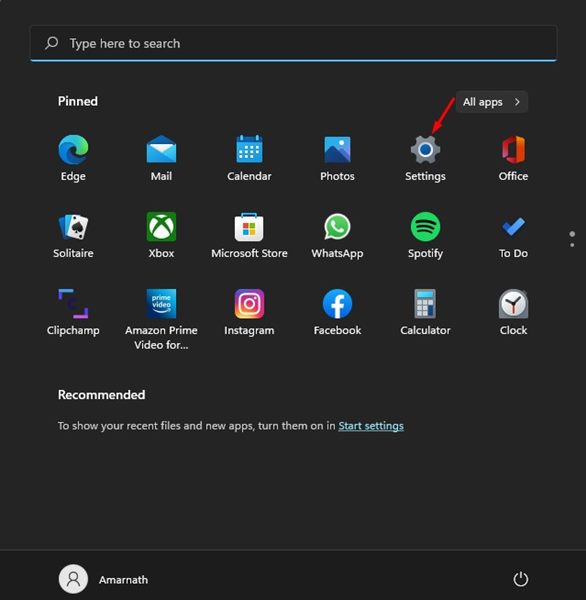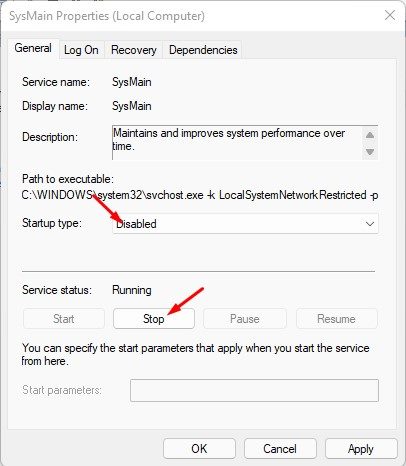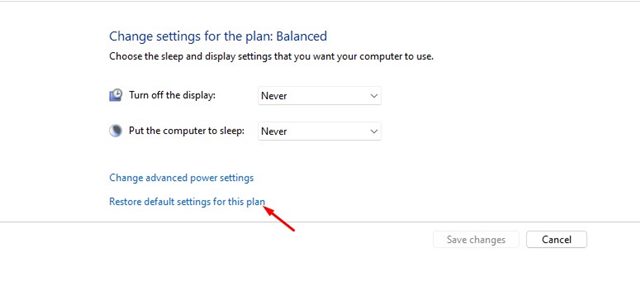After installing Windows 11, many users have reported High CPU usage while using their PC. High CPU usage or the CPU usage stuck at 100% is common, especially on a new desktop operating system like Windows 11.
Whenever a PC experiences excessively high CPU usage, users will face problems like poor performance, an app taking a long time to start, a system crash, BSOD, and more. However, the good thing is high CPU usage is often the result of software problems, which can be easily fixed by following these methods.
How do you check CPU usage in Windows 11?
The first thing you should do is check your current CPU usage. If it is stuck at 100%, you need to follow the steps. You can also follow the steps if you notice high CPU usage.
To check CPU usage in Windows 11, open Windows 11 search and type in Task Manager. Next, open the Task Manager and switch to the Performance tab. On the Performance tab, you need to notice the CPU usage.
1. Restart Your PC
If you haven’t restarted your PC in a while, do so now. Make sure to save all your tasks before you restart, as all your unsaved tasks will be lost once you restart.
When you restart your PC, all processes & apps get closed, giving your system time to cool down. In most cases, a simple restart will fix High CPU usage on Windows 11.
However, if you are experiencing high CPU usage even after the restart, follow the next methods.
2. Close Unnecessary apps
If you have many apps running in the background, you will face issues like High CPU usage regardless of your operating system.
So, make sure to close the apps you are not using actively. This will free up the CPU resources and improve your system performance. To close background apps, open Taskmanager, right-click on the program, and select the End Task option.
This will possibly resolve your Windows 11 task manager’s high CPU usage issue.
3. Disable Background Usage for Apps
If you feel that the app you use often is responsible for high CPU usage in Windows 11, you can turn off the background usage for those apps. If you do so, the app will only use the CPU resources when actively using them. Here’s what you need to do.
1. First, click the Windows 11 Start button and select Settings.
2. On the Settings page, click on the Apps section as shown below.
3. On the Apps, click on the Apps & Features option, as shown below.
4. Under Apps & Features, select the app and click on the three dots beside the app name. From the drop-down menu, click on the Advanced options.
5. On the advanced options page, find the Background Apps permission section. Now click the drop-down menu to let this app run in the background and select Never.
4. Disable the SysMain or Superfetch
For those who don’t know, SuperFetch renamed SysMain in the latest Windows 10 build and Windows 11, is designed to pre-load data for commonly used apps.
Due to the SysMain, the app loads faster and resumes your work exactly where you have left off. However, Superfetch or SysMain often leads to high CPU usage, especially on Windows 11. So, in this method, we will use SysMain to fix high CPU usage in Windows 11.
1. First, open the Windows 11 search and type in Services. Next, open the Services app from the list.
2. On the Services, find the SysMain service. Right-click on the service and select Properties.
3. On the SysMain Properties, select Disabled on the Startup type and click the Stop button on the Service status. Once done, click on the OK button.
5. Reset the Power Plan
Incorrect settings in the Power Plan often lead to excessive use of CPU usage on Windows 11. It’s not a sure-shot fix, but it’s worth a try. Hence, in this method, we will restore the default settings for Power Plans to fix high CPU usage in Windows 11.
1. Open the Windows 11 search and type in Power Plan. Next, click on the Edit Power plan option from the list.
2. On the Edit Plan Settings page, click on the Restore default settings for this plan link.
3. You will now see a confirmation prompt. Simply click on the Yes button to restore the default settings.
After making the changes, make sure to restart your computer.
6. Scan for Malware
Several malware for PCs can raise your PC’s memory and CPU usage. So, if you have recently installed any new program, after which you face high CPU usage, you need to remove that program.
If you don’t remember the program, you must run a full system scan with a reliable and powerful anti-malware program like Malwarebytes. Otherwise, you can rely on the Windows Security application to scan your system for viruses and malware.
7. Leave the Windows Insider Program
If you have joined the Windows Insider Program to receive Windows 11 dev or beta builds, you must leave it. The dev builds of Windows 11 have many bugs and can raise the CPU usage on your computer.
Some builds can even make your device unstable. So, the best you can do is to roll back to the stable build of Windows 11 and leave the Windows Insider Program. Here’s how to leave Windows Insider Program on Windows 11.
1. Open Windows Settings and switch to Windows Update.
2. On the right side, click on Windows Insider Program.
3. Now expand the Stop getting preview builds section.
4. Turn on the toggle for Unenroll this device when the next version of Windows Releases.
After making the changes, restart your Windows 11 computer. This should stop Windows 11 from downloading the insider builds.
8. Perform System Restore
If automatic system restore points are enabled, you can revert to a point before the high CPU usage problem first appears. Here’s how you can perform a system restore.
1. Click on Windows 11 search and type in Create a restore point. Now open the matching app from the search results.
2. On the System Properties, switch to the System Protection tab.
3. Select the recommended restore point and click the Next button.
Now follow the on-screen instructions to restore your Windows 11 PC.
9. Update your Windows 11
If 100% CPU usage in Windows 11 is due to a system bug, there’s nothing you can do. You need to wait for a fix or install the available updates.
If you are using an outdated version of Windows 11, you are bound to face stability issues. So, make sure to update your Windows 11 operating system. Here’s how to update Windows 11.
1. First, click the Windows 11 Start button and select Settings.
2. On the Settings page, click on the Windows Update option.
3. On the right click on the Check for updates button.
Now Windows 11 will search for updates and will install on your device.
10. Reset Windows 11
If nothing worked to fix high CPU usage on Windows 11, it’s time to reset all settings to default. Here’s how you can reset Windows 11.
1. Open the Windows 11 Settings and switch to Windows Update.
2. On the Windows Update, click on Advanced Options.
3. On the Advanced Options, click Recovery.
4. On the Recovery options, click Reset PC.
5. On the Choose an option prompt, select Keep my files.
6. Next, select Local Reinstall.
7. Finally, click the Reset on the Ready to Reset this PC screen.
11. Check the Hardware Issue
If you still face high CPU usage issues on Windows 11, even after following the above methods, you must check for hardware issues.
Often, hardware issues are the root cause of excessive or 100% CPU usage. There might be some issues with the power supply or the processor itself.
If the CPU is heating due to dust buildup on the heatsink, you need to get it cleaned. To resolve hardware issues, you must take your PC to a local service center and explain the problem.
Also read: How to Stop Automatic Updates on Windows 11
If you have followed all the methods and the hardware is not faulty, the high CPU usage on Windows 11 will be fixed. I hope this article helped you! Please share it with your friends, too. If you have any doubts, let us know in the comment box below.



























